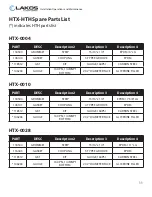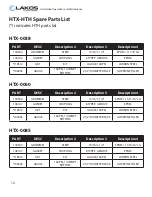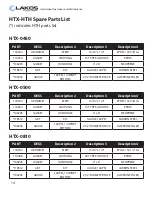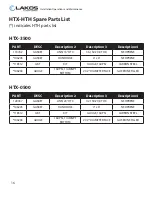
3
Installation Operations and Maintanence
Principle of Operation
Installation Instructions
LAKOS Separators are designed specifically to remove solids from liquids.
Each model is calculated for use within a prescribed flow range for
maximum performance and solids removal. Flow rates above and below the
recommended range may affect such performance. Upon tangential entry,
the liquid/solids are drawn through internal tangential slots and accelerated
into the separation chamber where solids heavier than the carrying liquid
are centrifugally separated and allowed to accumulate in the unit’s collection
chamber for eventual purging (see Page 5). The liquid (free of separable solids)
is then drawn to the vortex and up through the separator’s outlet.
1. LAKOS Separators are shipped on skids or in wooden crates. Support legs (22
½° low profiles only) are detached. Lifting Lugs, located on the unit’s side
and/or flanges, are provided for hoisting as necessary.
2. A suitable foundation is necessary to accommodate the LAKOS Separator’s
weight including liquid. Anchor bolts are recommended in the base of the legs
(low profile) or skirt (vertical profile).
3. Prior to installation, inspect the inlet/outlet/purge connections for foreign
objects incurred during shipping/storage.
4. Inlet/outlet pipe connections to the LAKOS Separator should be a straight
run of at least five pipe diameters to minimize turbulence and enhance
performance.
5. Proper purge hardware and/or solids-handling equipment is required to flush
separated solids from the separator.
6. All LAKOS Separators operate within a prescribed flow range (Pipe size is not
a factor in model selection). Use appropriate hardware to match the inlet/outlet
size.

















